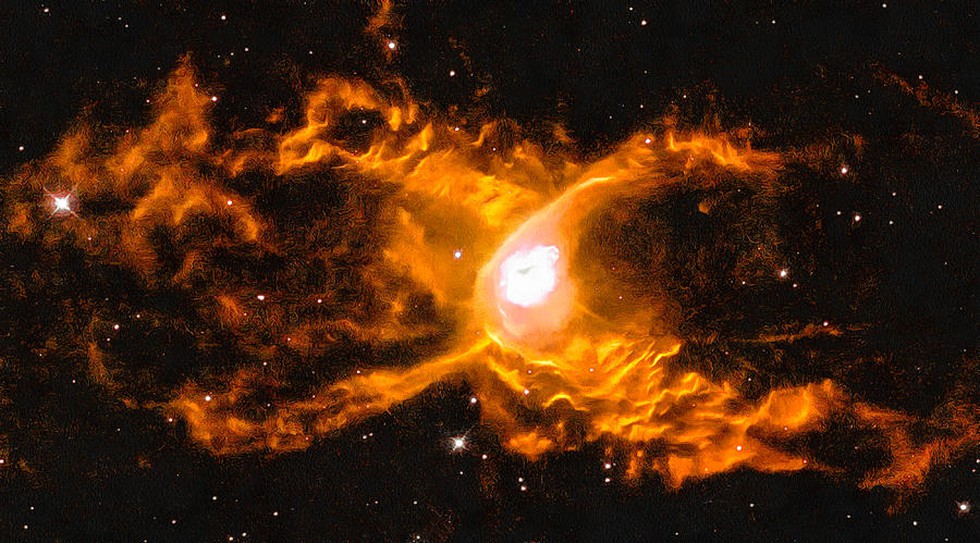NASA has recently captured the imagination of space enthusiasts with a remarkable image of the Red Spider Nebula. This planetary nebula, located about 3,000 light-years from Earth in the constellation Sagittarius, has been prominently featured in a breathtaking photograph taken by the Hubble Space Telescope.
Features of the Red Spider Nebula
- Image Description: The Hubble Space Telescope’s image reveals the Red Spider Nebula’s striking features. It shows a vivid display of orange waves of hot gas, resembling the curved legs of a black widow spider, which encircle a glowing pinkish core. The backdrop of the image is filled with countless white points of light, enhancing the celestial beauty of the scene.
- Astronomical Significance: The Red Spider Nebula contains one of the hottest stars known, which heats the surrounding gas and creates shockwaves that reach up to 62 billion miles (100 billion km) in height. These shockwaves contribute to the spider-leg-like arcs observed in the image, with the central star resembling a black widow spider’s hourglass.
Public Reaction and Impact
- Social Media Attention: Since its release, the image has gained significant popularity on social media, amassing nearly 600,000 likes. The post has generated numerous reactions and discussions, showcasing the public’s continued fascination with space exploration.
- Credit: The image was produced by the European Space Agency and Garrelt Mellema of Leiden University.
Multiple-Choice Questions (MCQs):
1. How far is the Red Spider Nebula from Earth?
A) 1,000 light-years
B) 2,000 light-years
C) 3,000 light-years
D) 4,000 light-years
Answer: C) 3,000 light-years
2. What notable feature does the Red Spider Nebula image highlight?
A) Blue waves of cold gas
B) Orange waves of hot gas resembling spider legs
C) Green waves of gas resembling a comet
D) Red dust clouds surrounding a dark core
Answer: B) Orange waves of hot gas resembling spider legs
3. What is the height of the shockwaves created by the star in the Red Spider Nebula?
A) 62 million miles
B) 62 billion miles
C) 100 million miles
D) 100 billion miles
Answer: B) 62 billion miles
4. Who is credited with the image of the Red Spider Nebula?
A) NASA and Garrelt Mellema
B) European Space Agency and Hubble Space Telescope
C) European Space Agency and Garrelt Mellema
D) NASA and Leiden University
Answer: C) European Space Agency and Garrelt Mellema
5. How has the public responded to the image of the Red Spider Nebula?
A) Minimal interest
B) Significant controversy
C) Widespread attention with nearly 600,000 likes
D) General indifference
Answer: C) Widespread attention with nearly 600,000 likes
